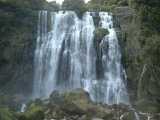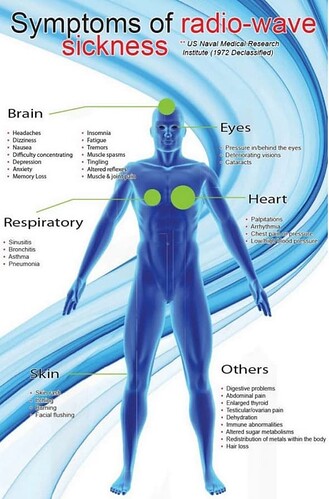Radiofrequency radiation injures trees around mobile phone
base stations
trees.scitotenv.2016.08.045 (1).pdf (2.2 MB)
Around the world, phone masts have been deployed in the last two
decades everywhere. Preliminary published studies have indicated del-
eterious effects of radiofrequency radiation on trees (Balmori, 2004;
Van't Wout, 2006; Schorpp, 2011; Waldmann-Selsam, 2007;
Waldmann-Selsam and Eger, 2013), cautioning that research on this
topic is extremely urgent (Balmori, 2015). However, these early warn-
ings have had no success and deployment has been continued without
consideration of environmental impact.
In a review of the effects of environmental microwaves on plants
(Jayasanka and Asaeda, 2013), it was indicated that effects depend on
the plant family and the growth stage, as well as the exposure duration,
frequency, and power density. This review concluded that most studies
that address the effects of microwaves on animals and plants have doc-
umented effects and responses at exposures below limits specified in
the electromagnetic radiation exposure guidelines and it is therefore
necessary to rethink these guidelines (Jayasanka and Asaeda, 2013).
Additionally, unilateral crown damage, beginning on the side facing
an antenna, pointed to a possible link between RF-EMF (Radiofrequency
Electromagnetic Fields) and tree damage. We carried out measure-
ments on both sides of unilaterally damaged trees. Most of the trees
had been exposed to RF-EMF for at least five years. Each time we found considerable differences between the measured values on the
damaged and on the healthy side.
Fig. 3. Map showing the 60 damaged trees and phone masts (both with code numbers) over the interpolation electromagnetic map of the 144 measurement points.
From all 60 selected trees, one or more phone mast(s) could be seen,
with no obstacles between the phone mast and damaged tree. In many
cases, one of the three closest antennas caused the main radiation on the
tree surface. In ten trees (codes: 4, 7, 9, 10, 15, 26, 27, 31, 35, and 50),
another antenna in direct line of sight caused the measured radiofre-
quency exposure. This was determined using topography and existing
buildings (Table 4 and Fig. 3).
In the electromagnetic field of all mobile phone base stations visited
numerous tree damages were observed. The damage occurred in tem-
poral relation with the putting into operation of new mobile phone
base stations. Woody plants of all species are affected (deciduous and
coniferous trees as well as shrubs).
Electromagnetic radiation from telecommunication antennas affect-
ed the abundance and composition of wild pollinators in natural habi-
tats and these changes in the composition of pollinator communities
associated with electromagnetic smog may have important ecological
and economic impacts on the pollination service that could significantly
affect the maintenance of wild plant diversity, crop production and
human welfare (Lázaro et al., 2016).
Evidence for plant damage due to high frequency electromagnetic
radiation was not taken into account in determining the current statuto-
ry regulations (the limit values). Once the problem becomes evident,
the guidelines of radiation emitted by the antennas should be reviewed.
Proper risk assessment of electromagnetic radiation should be under-
taken to develop management strategies for reducing this pollution in
the natural environment (Kumar et al., 2015).
Moreover, due to the lack of recognition, certain modern projects
with interesting ideas for decreasing environmental pollution could
have opposite effects than expected. For example, in the Netherlands,
the TreeWiFi project (http://treewifi.org/), which aims to motivate people
to use bikes and public transport in order to reduce the [NO2] pollution
providing free WiFi when air quality improves, could be favoring electro-
magnetic pollution with even more harmful effects as it has been demon-
strated in this manuscript (see also: Home - Greenpeace Canada
fr/Blog/le-wi-fi-tuerait-les-ar-bres/blog/33569/).








